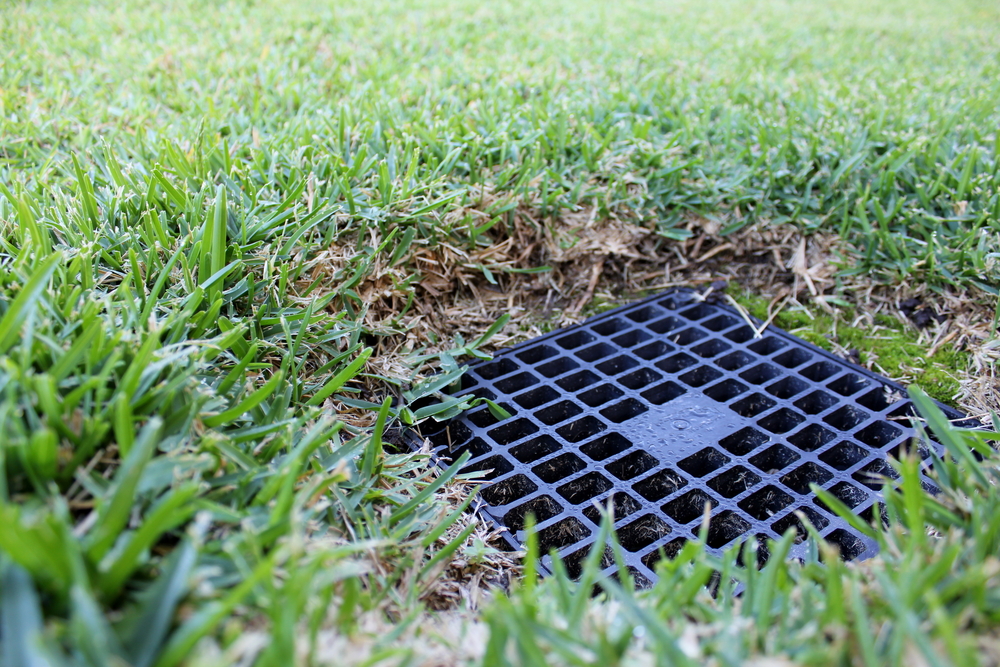Water damage can wreak havoc not only on your landscape but nearby buildings, trees, patios and your home. Pooling water near the foundation can damage the structure and integrity of your house so keeping that water away from the house and any other buildings is really key to providing long-lasting and semi-maintenance-free landscaping. The soils here in Kentuckiana are mostly clay, un-excavated clay does not let water thru and clay that is used for back fill against your foundation walls does hold water like a wet sponge, adding weight to the exterior of the foundation walls.
There are several signs that may indicate yard drainage problems, including:
- Puddles forming in the yard after rain or irrigation
- Water standing near your foundation
- Waterlogged areas in the yard that remain wet for long periods of time
- Basement flooding during heavy rains
- Moss or mold growth in low-lying areas
- Uneven or sinking patches in your lawn
- Landscaping erosion or shifting
- Unpleasant odors coming from damp areas
If you experience any of these symptoms, it may be a sign of poor yard drainage and it is recommended to have a professional assess the situation.
What is landscaping grading?
Landscaping grading refers to the scoping or leveling of land intended to prepare outdoor places and spaces for concrete driveways pathways, patios, stairs, plants, or just preventing water from pooling when it rains.
When you grade the landscape for water pooling prevention it’s called drainage. Grading and drainage can be defined as the reshaping of your property or land between different points in the landscaping to properly drain the site and steer water away from structures and prevent flooding.
Regardless of your land and surface characteristics, slope is the most important issue to consider. For effective drainage, paved surfaces should have a minimum 1% slope and turf or landscaped areas should have a minimum 2% slope to account for the land soaking up the extra moisture.The building codes also require a 6” in 10’ grade against a foundation wall.
Grading is typically measured by the horizontal length of an elevation, the run, and the vertical height of the elevation or the rise. Grade is expressed as rise or run, so if the rise is 25 and the run is 80, the greatest consider 25/80. But, that’s a lot of information you may not need to know if you hire a professional drainage contractor like KCS to take care of drainage and grading.
Additional Drainage and Grading Help
Sometimes, if simple grading just with the typography cannot be achieved, homeowners will need to install drainage systems to control the amount of water flow into landscapes, gardens, and away from basements or foundations. French drains can accomplish this by digging down, burying pipe that carries the water away and then filling it with rocks allowing the water to seep through to the cloth-covered drainpipe and carry the water away from the home.
Drainage and grading is extremely important when it comes to environmental factors such as storm water runoff. This type of water runoff can erode streams and wash sediment into receiving waters, especially if you live close to a creek or river. By installing a drainage system, it can infiltrate runoff into the soil and redistribute water into other vegetation or even your lawn.
Surface drainage collects water from the surface of the ground and redirects it elsewhere. This is a drainage system that typically collects rainwater before it has a chance to enter the storm water systems. Surface drainage and grading require a channel or ditch and reshaping and grading the surface to eliminate pooling for long-term saturation.
Subsurface drainage is installed beneath the soil surface and is used for landscapes, gardens, and usually behind retaining walls that can collect moisture.
How do you know when you have a drainage problem?
The easiest way to tell if you have a drainage problem is if you have areas of pooling water after a storm or major rainfall. If you notice that there is standing water for longer than 24 hours in a particular area, chances are you have a drainage issue. If that water pools too close to the foundation of your house, you could have a major problem on your hands if it’s not corrected sooner.
For more information on drainage and grading or if you have questions on whether or not your home and property needs proper drainage, give us a call for a free inspection. We’d be happy to come out and discuss your options and how you can preserve your landscaping for years to come.
